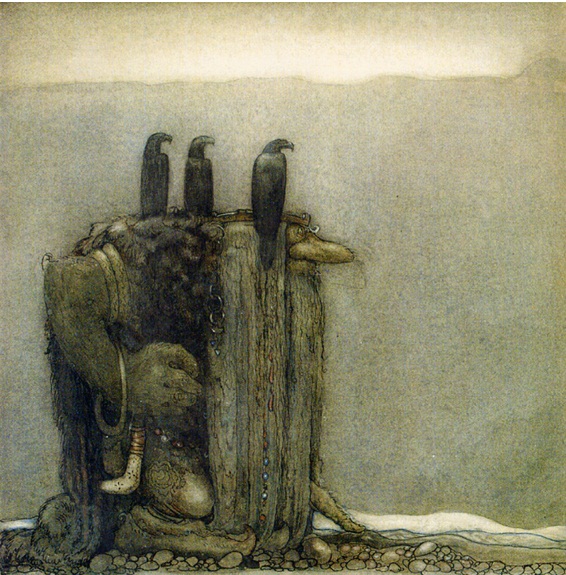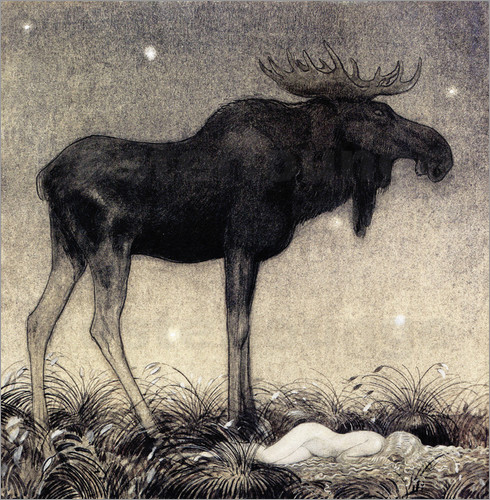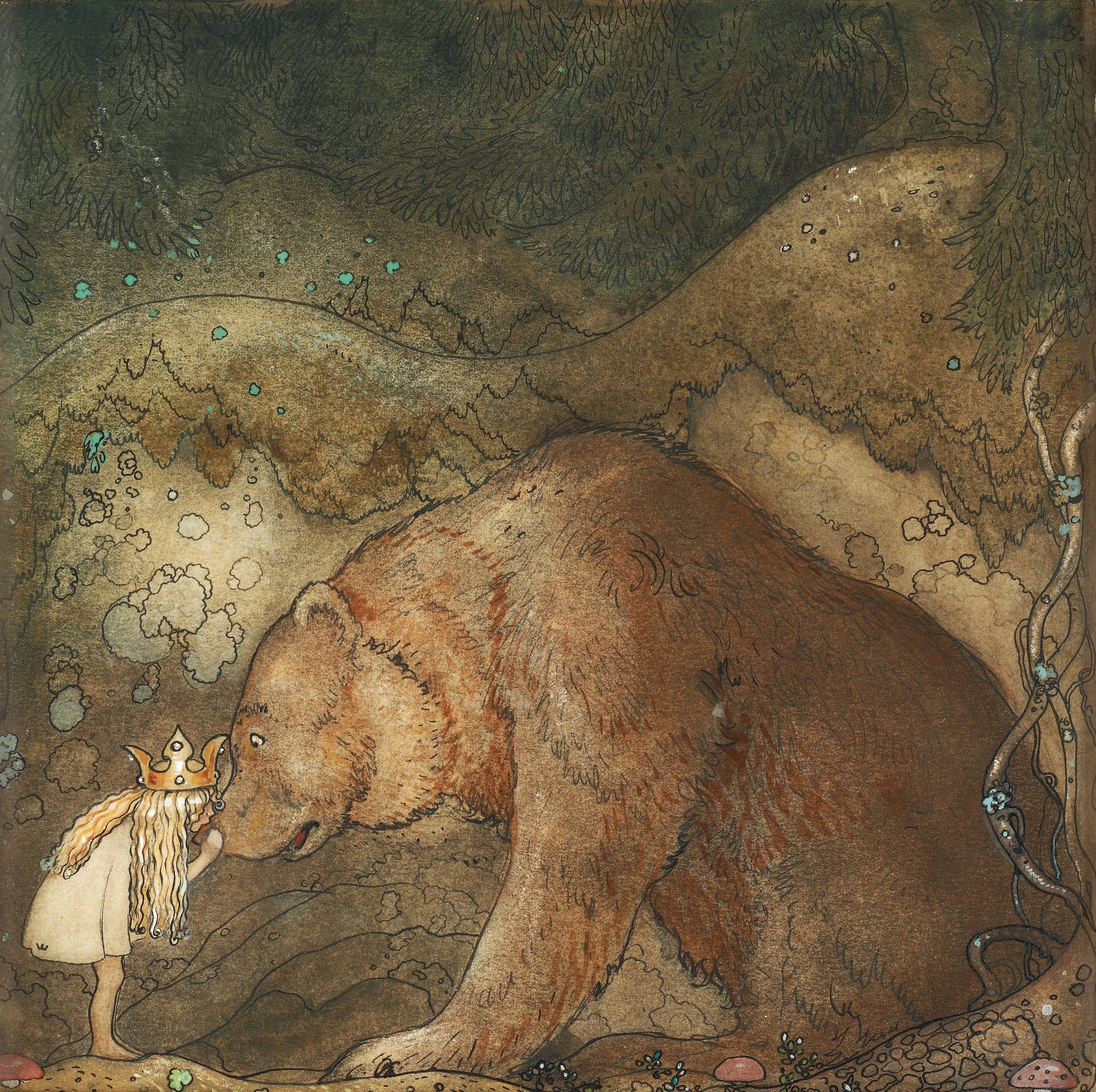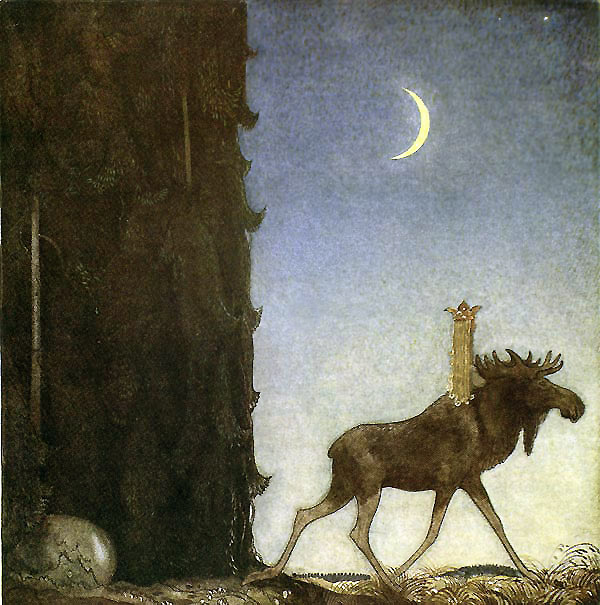Inspiration Corner - Scandinavian Folklore
We thought it might be fun to intersperse some of our more technical blog-posts with a closer look at some of our inspirations and references for Röki. There's far too much for one blog so we'll be breaking them down into a series of blog-posts over the next few months.
As we've mentioned previously, Scandinavian folklore has been a big part of designing Röki, particularly in terms of fleshing out the world that Tove (and you as the player) will ultimately explore. As well as scouring the internet, one book that has been a great touching point is 'Swedish Folk Tales'
The stories and their artwork capture a lot of the feelings that we want to convey in Röki, despite being written and illustrated nearly 100 years ago (good stories are timeless though!). They tell tales of bravery and trickery, often featuring plucky children venturing into the forest,...sound familiar?
One of my favourite stories is about a port crofter and his eight children. They don't have much, but they do have the best cow in the county who provides them with as much milk as they need (...cows feature a lot in these types of stories!). However, one morning, disaster strikes and the family wake up to discover that their beloved cow is missing. They quickly realise that she has been taken by a nasty troll (...trolls also feature a lot!). The family are stricken with grief, no-one had ever dared go to the terrible caves where the troll lives, let alone confront the other creatures in the forest, so they assume there is no hope of getting their cow back. What they don't bank on is Nisse, one of their sons - a boy literally unafraid of anything. Nisse takes it upon himself to rescue their cow. His complete lack of fear helps him to befriend some of the creatures he meets a long the way; an old witch whose hair gets stuck in a tree as she tries to grab him - he frees her instead of running away, a fierce watchdog who Nisse helps by removing a thorn from his paw, and a huge angry bear who is about to eat Nisse, but Nisse sees something stuck in his teeth and removes it (you get the idea). However, the one creature his kindness cannot overcome is the troll, who is just too evil. As the troll is about to eat Nisse, Nisse shouts for help and his new forest friends (who had been waiting outside out of concern) rush in to help him in defeating the troll and freeing the cow. Happy days!
I think what I like is the way the story adds an extra dimension to some of the 'bad' creatures in the forest. Their initial impulses are to attack Nisse, but his bravery shocks them out of their traditional 'bad monster' role and shakes up their moral compass to such a degree that they become protectors of Nisse. It's not to say that they've suddenly become good (they'd definitely attack another child given half the chance), but the bravery of Nisse is something that they respect according to the code with which they live by. The fact that Nisse is a child only makes it even better. His lack of fear is bound to his innocence and lack of prejudice, something all children have, and something we'll be using in Röki.
The illustrations from the book are by an artist called John Bauer. I particularly like his depiction of children, in that he manages to brilliantly capture their freedom and lack of inhibition. He's great at making them look fragile and under threat through his use of scale. He's also fantastic at capturing the silent mystery and power of the forest.
If you've not seen his work before, check it out. Tragically, Bauer died when he was just 36. He, his wife and son all drowned in a shipwreck on Lake Vättern in Sweden. A horrific early end to what surely would have been an illustrious career. Here are some more of his images for you to enjoy:
That's about it for this week. Check back in next Friday for a new blog :)
Cheers,
Tom & Alex









